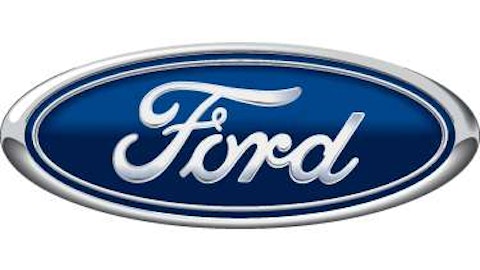The financial crisis saw the domestic auto sector get turned upside down, as General Motors Company (NYSE:GM) and Chrysler sought bankruptcy protection and Ford Motor Company (NYSE:F) mortgaged everything, including the kitchen sink. Despite reducing factory wages and unloading some pension obligations, the auto giants seem predisposed to their old habits, where high leverage and high-margin, truck-heavy sales were the norm. However, a Silicon Valley startup, Tesla Motors Inc (NASDAQ:TSLA), has emerged as a major disrupting force in the industry with its low-emission electric vehicles and franchise-light operating model. So, what does the future hold?
Going high-tech for low emissions
Thanks to billionaire founder Elon Musk’s fortitude and a big loan from Uncle Sam, Tesla Motors Inc (NASDAQ:TSLA) has finally transformed itself from a nice idea into an automotive force to be reckoned with. While its first generation vehicles were expensive toys for the rich and famous, Tesla has been able to better price its latest model for the mass market, with a $62,000 starting price for the new Model S, due to the wisdom gained from the hard times that the company experienced during its unprofitable early days. Indeed, production has skyrocketed in 2013 as the company’s unit production costs have fallen sharply, leading to Tesla Motors Inc (NASDAQ:TSLA)’s first quarterly operating profit on an adjusted basis.
In the first quarter of FY2013, Tesla Motors Inc (NASDAQ:TSLA) reported revenues of $561.8 million, with roughly 4,900 vehicles delivered to customers. Its gross margin improved to 17.1%, a positive move toward its goal of a 25% gross margin, due to efficiencies in its supply chain and economies of scale. More importantly, Tesla reached positive operating cash flow during the period, providing momentum and funds for an expansion of its retail store and service network.
Lighting a fire in Detroit
Of course, the top dogs of the domestic auto scene aren’t exactly standing still. Since emerging from bankruptcy, General Motors Company (NYSE:GM) has been rebuilding its operating efficiency and financial strength, while also expanding financing options for both its dealers and customers. Along these lines, the company acquired the European and Latin American operations of its former GMAC subsidiary in 2012.
In FY2012, General Motors Company (NYSE:GM) reported mixed financial results, with a 1.3% increase in revenues and a 7.8% decrease in adjusted operating income. While the company’s sales benefited from a rebound in U.S. auto industry production to nearly 15 million vehicles, GM’s European unit posted weak numbers, with declines in sales and profitability. In addition, General Motors Company (NYSE:GM) was hurt by rising compensation costs and marketing expenditures in the competitive domestic market.
Looking ahead, GM is trying to combat the Tesla threat by focusing on innovative energy initiatives, such as advanced transmissions, lighter vehicles, and electric vehicle offerings. The company has 21 FlexFuel vehicles in its 2013 lineup, capable of running on gas or ethanol, as well as 12 hybrid models, like the Chevy Volt and Spark. Given rising government requirements on emissions and mileage standards, customers should expect to see even more offerings from GM in the future.





